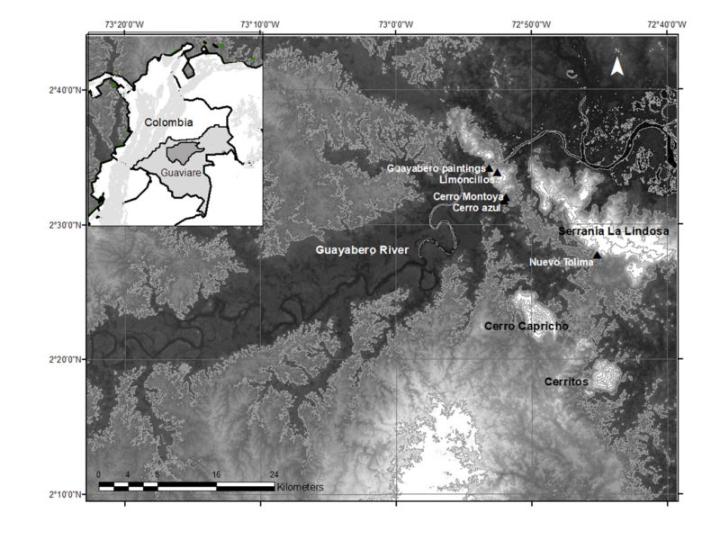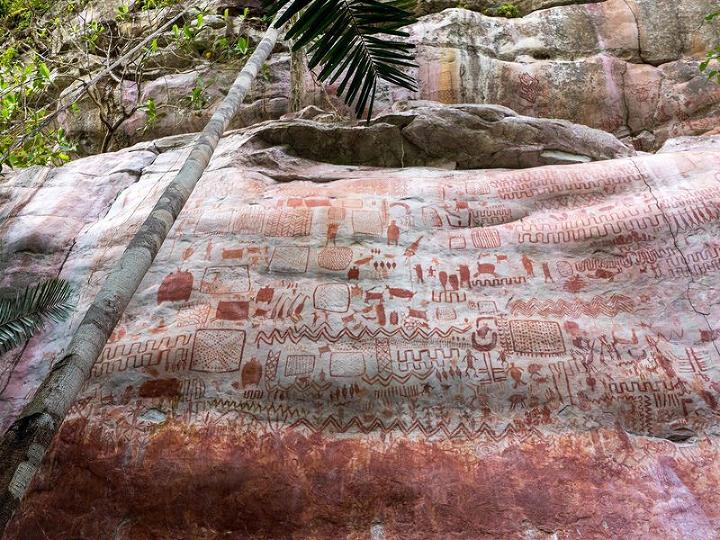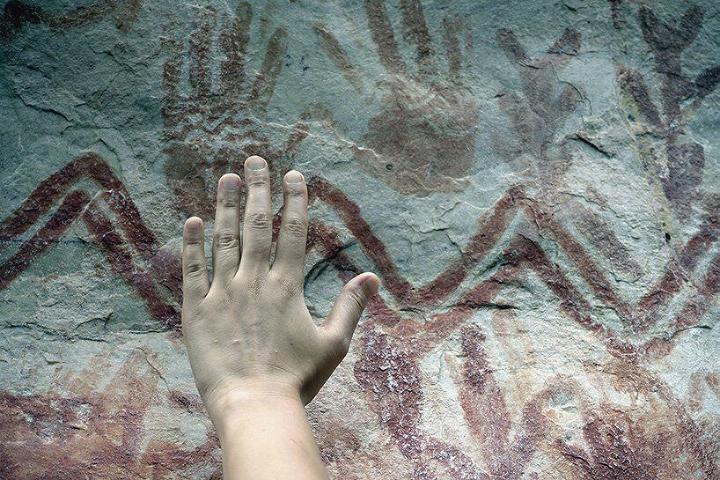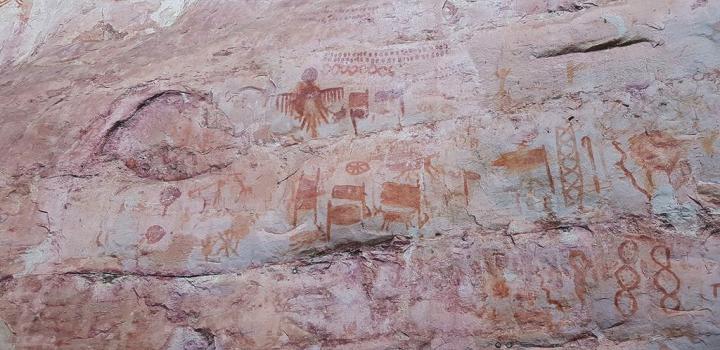 |
Canku Ota
|
 |
|
(Many Paths)
|
||
|
An Online Newsletter
Celebrating Native America
|
||
|
March 2021 - Volume
19 Number 3
|
||
|
|
||
|
Tens Of Thousands
Of 12,000-Year-Old Rock Paintings Found In Colombia
|
||
|
by Livia Gershon - SMITHSONIANMAG.COM
|
||
|
The images —
heralded by researchers as "the Sistine Chapel of the ancients"
— depict animals, humans and geometric patterns
Toward the end of the last Ice Age, prehistoric artists painted tens of thousands of images—including depictions of mastodons, giant sloths and other now-extinct animals—on cliff walls in the Amazon rainforest, reports Dalya Alberge for the Guardian. Archaeologists found the first of the enormous set of images in 2017 but kept the trove secret while continuing work and preparing a television series on the discovery. A British-Colombian research team funded by the European Research Council spotted the paintings stretched across eight miles of cliffs in the Serranía de la Lindosa, which is part of the Colombian Amazon. The red-ocher art features fish, lizards, birds, geometric patterns and humans, including people dancing. In at least one image, a human dons a mask suggestive of a bird's face. Also shown are an extinct camelid known as a palaeolama and a type of horse that lived in the region during the Ice Age. "The pictures are so natural and so well made that we have few doubts that you're looking at a horse, for example," team leader José Iriarte, an archaeologist at Exeter University, tells the Guardian. "The [Ice Age] horse had a wild, heavy face. It's so detailed, we can even see the horse hair. It's fascinating." Live Science's Laura Geggel reports that ancient artists created the works between 12,600 and 11,800 years ago. At the time, the area was transforming from a landscape of savannas, shrubs and forests into the tropical rainforest seen today. According to team member Mark Robinson, also an archaeologist at the University of Exeter, the people who made the images were probably among the first humans to live in the western Amazon. "The paintings give a vivid and exciting glimpse [into] the lives of these communities," says Robinson in a statement. "It is unbelievable to us today to think they lived among, and hunted, giant herbivores, some which were the size of a small car."
The archaeologists' work includes investigations into ancient agriculture and the ways in which humans transformed the Amazonian landscape. In rock shelters located near the art, researchers discovered the remains of food eaten by the artists, including fruits, alligators, capybara and armadillos. Until recently, the area had been inaccessible to researchers due to Colombia's 50-year civil war. Per Brian Boucher of artnet News, the investigation began after the 2016 signing of a peace treaty. But archaeologists still had to obtain permission from rebel forces who had not signed on to the agreement to make the five-hour trek through the forest to the cliff sites. Iriarte tells artnet News that the artists' choice of smooth rock walls sheltered from rain served as an ideal canvas for the detailed paintings. Some of the works are located so high up on the cliff walls that the researchers had to use drones to photograph them. Speaking with the Guardian, Iriarte says the images themselves offer clues as to how artists reached such heights. Several show wooden towers and humans who appear to be jumping from them. According to Iriarte, the pictures may relate to religious practices. For example, some show large animals surrounded by small human figures with their arms raised, possibly in worship. "For Amazonian people, non-humans like animals and plants have souls, and they communicate and engage with people in cooperative or hostile ways through the rituals and shamanic practices that we see depicted in the rock art," he tells the Guardian. The researchers published some of their findings in April in the journal Quaternary International. A documentary about the findings, "Jungle Mystery: Lost Kingdoms of the Amazon," will air on British public television station Channel 4 later this month. |
||||||
 |
|
|
||
|
|
||
| Canku Ota is a free Newsletter celebrating Native America, its traditions and accomplishments . We do not provide subscriber or visitor names to anyone. Some articles presented in Canku Ota may contain copyright material. We have received appropriate permissions for republishing any articles. Material appearing here is distributed without profit or monetary gain to those who have expressed an interest. This is in accordance with Title 17 U.S.C. Section 107. | ||
|
Canku Ota is a copyright ©
2000 - 2021 of Vicki Williams Barry and Paul Barry.
|
||
 |
 |
|
|
The "Canku
Ota - A Newsletter Celebrating Native America" web site and
its design is the
|
||
|
Copyright ©
1999 - 2021 of Paul C. Barry.
|
||
|
All Rights Reserved.
|
||


